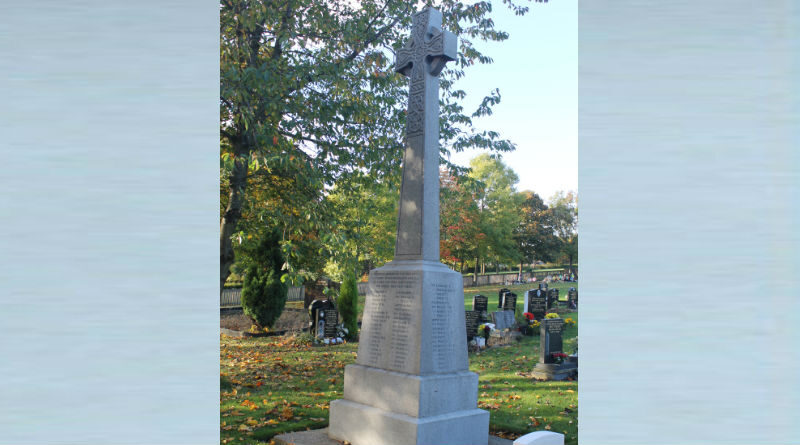31. Lemington-on-Tyne War Memorial
Updated on 24 February 2021
Lemington-on-Tyne, Northumberland, has possibly the only freestanding war memorial identified in England to carry the name of a Quaker ambulance worker.

The name is Walter Messer (1894 – 1915), his name appears among the memorial’s inscriptions of the First World War dead who came from the Lemington-on-Tyne area.
Walter was born in 1894 into a Quaker family living in Lemington-on-Tyne, Northumberland. He was educated at the Quaker Ackworth School, and then was an agricultural student until he volunteered for the Friends’ War Relief Victims Service in May 1915.
Friends War Victims Relief Service and Friends Ambulance Unit
The principles of the Quakers’ Peace Testimony, which supports peace and opposes participation in war, meant that the majority of Friends felt unable to serve in the Armed Forces during wartime.
Instead, during the First World War, Quakers focused on humanitarian work and set up organisations such as the Friends War Victims Relief Service (FWVRS) and the Friends Ambulance Unit (FAU). Almost 1,500 Conscientious Objectors were recruited, not just Quakers, and Messer was one of them.


The FWVRS was established in 1870, following the outbreak of the Franco-Prussian War and created the red & black Quaker Star as its symbol. From the beginning of the First World War until after the armistice, the FWVRS set up camps for refugees in Belgian and the Netherlands. The organisation also opened a hospital, a school for blind children, an orphanage and several rebuilding projects across Europe.
The FAU, panel 62 (opens in a new tab) of the Quaker Tapestry, was set up specifically for the First World War and would first go to Dunkirk in 1914 under the auspices of the British Red Cross Society. The FAU carried out relief work in allied occupied Belgium and supported wounded men from the active French divisions in Champagne and Argonne regions.
During World War II, the FAU set up a training camp in Birmingham for ambulance drivers and orderlies. Over 1,300 people were trained and the new recruits began by helping those in need during the Blitz of London. FAU members also served overseas in a number of European countries as well as in Africa and the Middle East. There was also a deployment to China to aid suffering caused by the Second Sino-Japanese War (1937 – 1945).
The original trainees in the 1939 training camp issued a statement expressing their purpose:
We purpose to train ourselves as an efficient Unit to undertake ambulance and relief work in areas under both civilian and military control, and so, by working as a pacifist and civilian body where the need is greatest, to demonstrate the efficacy of co-operating to build up a new world rather than fighting to destroy the old.
Friends Ambulance Unit
The FAU was wound up in 1946 and replaced by the Friends Ambulance Unit Post-War Service, which continued until 1959.
Messer’s Service
Messer first served with the FWVRS in France until August 1915. Then in October 1915 he transferred to the FAU, also in France. A month later, on 28 November, he was killed by a German bomb in Flanders. He is buried in Malo-les-Bains Commmunal Cemetery, Nord, 1 A, Grave 4A.
His inscription on the Lemington -on-Tyne War Memorial has FAU before his name.
The 32nd of the Quakers in 50 Objects is a A Shaking Quakers’ Chair
Images from heritagecalling.com/, quakerstrongrooms.org/ and dorkingmuseum.org.uk/

